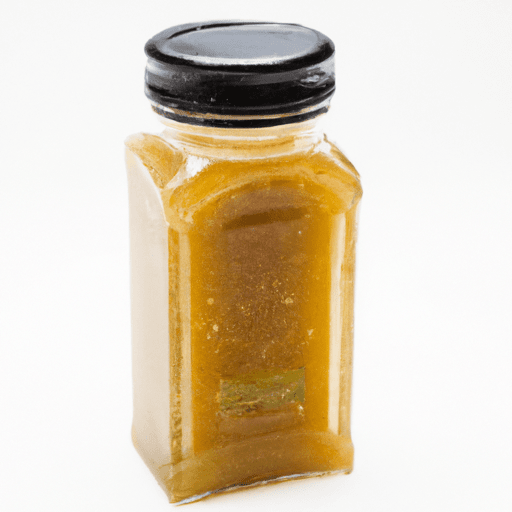Low-Fat Asian Dressing: The Perfect Balance of Flavor and Health
Are you craving a tangy, aromatic dressing that adds a burst of flavor to your dishes without compromising your health goals? Look no further than the delightful world of low-fat Asian dressings! Bursting with umami-rich flavors and a perfect balance of sweet, sour, and savory, these dressings not only elevate the taste of your dishes but also offer a range of health benefits. In this blog post, we’ll explore the intricate characteristics of low-fat Asian dressings, their nutritional value, and discover exciting historical facts. Let’s dive in!
The Taste of Low-Fat Asian Dressing
Low-fat Asian dressings are renowned for their vibrant and complex flavors. They embrace a harmonious blend of tanginess from vinegar or citrus, subtle sweetness from honey or agave, and a rich savoriness imparted by soy sauce or miso paste. Infused with invigorating aromatics like ginger, garlic, or sesame oil, these dressings bring a delightful punch to any dish. The result is a flavor profile that is both familiar and exotic, giving your taste buds a tantalizing experience.
Common Uses in Cooking
Low-fat Asian dressings are remarkably versatile and can be used in a myriad of ways. Their primary use is as a dressing for salads, adding a zesty and refreshing touch to your greens. A drizzle of dressing can transform a simple bowl of mixed greens into a vibrant and satisfying meal. Additionally, these dressings serve as an exceptional marinade for meats, tofu, or vegetables, infusing them with a delightful Asian flair. They can also be used as a dipping sauce for spring rolls, dumplings, or grilled skewers, taking your appetizers to the next level.
Nutritional Value
One of the standout qualities of low-fat Asian dressings is their impressive nutritional composition. With their emphasis on fresh ingredients and a reduced fat content, these dressings can be an excellent addition to a balanced diet. Traditional Asian ingredients like soy sauce and miso paste provide a natural source of protein and are packed with essential amino acids. Moreover, the use of ginger and garlic brings a boost of antioxidants and anti-inflammatory properties. By opting for low-fat versions, you can savor the fantastic flavors of Asian cuisine while keeping your calorie intake in check.
Interesting History and Facts
Asian dressings have a rich and diverse history that spans thousands of years. Many traditional Asian dressings find their roots in Chinese, Japanese, Thai, or Vietnamese culinary traditions. Soy sauce, a staple ingredient in many dressings, originated in China over 2,500 years ago and eventually spread across Asia. The use of ingredients like ginger and garlic can be traced back to ancient Chinese medicine, where they were revered for their health benefits.
Another interesting aspect of low-fat Asian dressings is their adaptability to different dietary preferences. They can easily be customized to suit vegetarian, vegan, or gluten-free diets. By substituting certain ingredients like fish sauce with tamari or using agave instead of honey, you can create dressings that cater to various nutritional needs while preserving their authentic flavors.
Conclusion
Low-fat Asian dressings offer an incredible fusion of taste and health benefits. With their bold flavors, versatility in cooking, and impressive nutritional value, they are a perfect addition to any kitchen. Whether you’re looking to elevate your salads, marinate your proteins, or add an extra zing to your appetizers, low-fat Asian dressings have got you covered. So why not embark on a culinary adventure and give these tantalizing dressings a try? Your taste buds and your wellbeing will thank you!
Note: The mentioned recipe is a general representation of low-fat Asian dressing. Please refer to specific recipes for exact measurements and ingredients.
Low Fat Asian Dressing
Origin: Asian dressings are a type of sauce commonly used in Asian cuisine. Their exact origin is difficult to trace, as different variations of dressings have developed across various Asian countries. However, they are often associated with traditional flavors and ingredients found in Asian cooking.
Common Uses: Low fat Asian dressings are versatile and can be used in a variety of ways. They are commonly used as a dressing for salads, as a marinade for meats and vegetables, and as a dipping sauce for spring rolls or dumplings. They can also be used to flavor stir-fries or as a drizzle over rice or noodle dishes.
Nutritional Benefits: Low fat Asian dressings are often made with ingredients that provide nutritional benefits. Soy sauce, a common ingredient, is a source of protein and minerals like iron and magnesium. Ginger, another common ingredient, is known for its anti-inflammatory properties and digestive benefits. Rice vinegar, often used as a base for Asian dressings, is low in calories and can support digestion.
Unique Properties: Low fat Asian dressings typically feature a balance of sweet, salty, sour, and savory flavors. They often incorporate ingredients such as soy sauce, sesame oil, rice vinegar, ginger, garlic, and citrus juices. Some dressings may also include ingredients like Thai chili, lemongrass, or cilantro to add a unique kick or freshness to the flavor profile.
Historical Significance: Dressings and sauces have been an integral part of Asian cooking for centuries. In countries like China, Japan, Thailand, and Vietnam, traditional dressings and dipping sauces have evolved over time and are deeply embedded in the culinary traditions of these regions. These dressings reflect the diversity and complexity of Asian flavors and are enjoyed both in Asian countries and around the world.




Use the share button below if you liked it.
It makes me smile, when I see it.